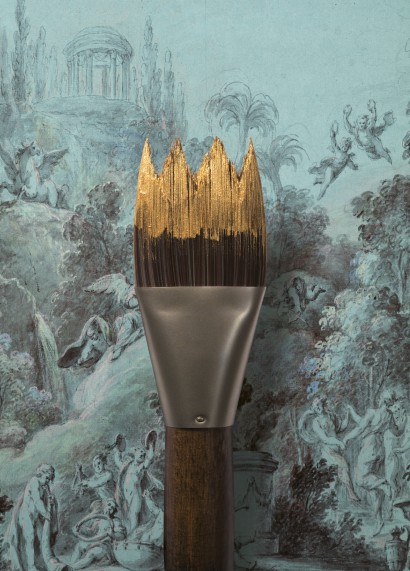

We invite visitors to see an exhibition devoted to Jan Bogumił Plersch. Works by the royal artist – filled with finesse, grace and fantasy – adorn the most important buildings of the Royal Łazienki. Their history will be presented at an exhibition held from 4 July to 3 December, organised on the occasion of the 200th anniversary of the painter’s death.
The exhibition "In the grip of artistic fervour. Jan Bogumił Plersch – Court painter to King Stanisław August" will take the form of walks around the buildings decorated by Jan Bogumił Plersch. They include the Palace on the Isle, the Royal Theatre in the Old Orangery, the White Pavilion and the Myślewicki Palace. It will be possible to visit the exhibition individually, in the buildings’ opening hours, or join guided tours (Tuesday through Sunday at 11.00 and 14.00 - meeting point near the checkout desk in the Old Orangery, no reservations, limited capacity). Tickets to the exhibition (individual visits and guided tours): PLN 30 – standard, PLN 20 – reduced, PLN 1 – children and students up to 25 years of age.
Visitors will have a chance to admire wall paintings and plafonds, making up a historical tale of the artistic career of the painter and his patron – Stanisław August – which unfolded in the Royal Łazienki. Visitors will learn about the messages hidden in the decorations by Jan Bogumił Plersch, and the socio-political programme which they embody. Each building contains an information board with a map designating the location of each project by the artist.
The exhibition will feature, among other works, the plafond "Zephyr and Flora" in the Myślewicki Palace – the only preserved plafond painting in all Warsaw’s residential interiors – as well as its original design, borrowed from the Print Room of the Warsaw University Library.
The Royal Theatre features a plafond where Stanisław August is depicted as Apollo – a symbolic representation of the King as the ruler of the perfect state, and an allegory of his patronage. It also houses a design of a curtain, "Muses on Mount Helicon", which has not survived. It is an ink drawing, depicting nine muses on Mount Parnassus. It has been enlarged and suspended in the place of the former curtain used in the Royal Theatre.
The exhibition also features painted decorations from the Palace on the Isle, including those from the Ballroom. In addition, the Palace on the Isle includes visualisations of plafond paintings from the Bacchus Room and the Bathroom, destroyed during the war.
The exhibition is accompanied by a rich educational programme – family workshops and an interactive exhibition for children – "Idź na żywioł!" ("Brave the elements!") in the Old Guardhouse.
Jan Bogumił Plersch (1732-1817) was the most notable decorator working for Stanisław August. He was able to distil finesse, grace and fantasy into his paintings, as well as shade and light nuances. He would undertake various subject matters with ease: fanciful illusory paintings in the Royal Theatre, vedutas and Antique-styled grotesques – a genre where Plersch pioneered his own style. Motifs which, using Virtuvius’ words, are "unlike reality", are central to grotesque painting and comprise mythological creatures, ornaments, human beings, objects, landscapes – an entire universe of objects. The diversity of forms led to a great wealth of meanings hidden in the apparently trivial depictions.